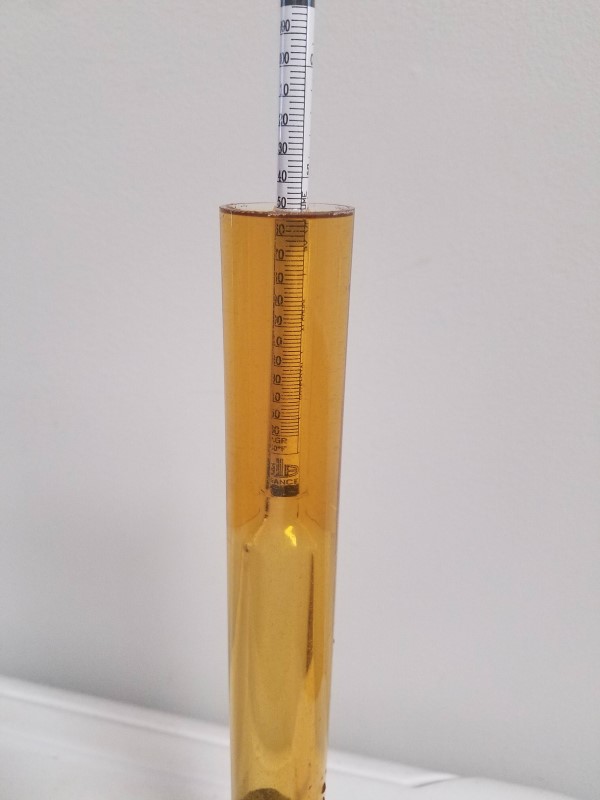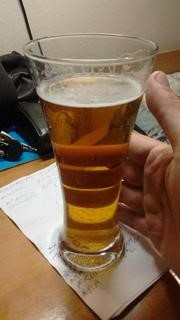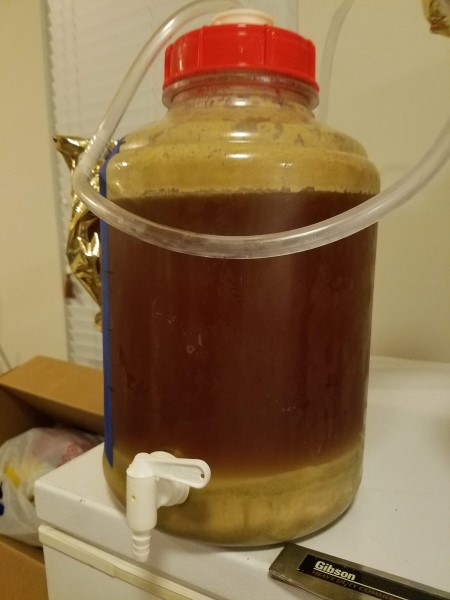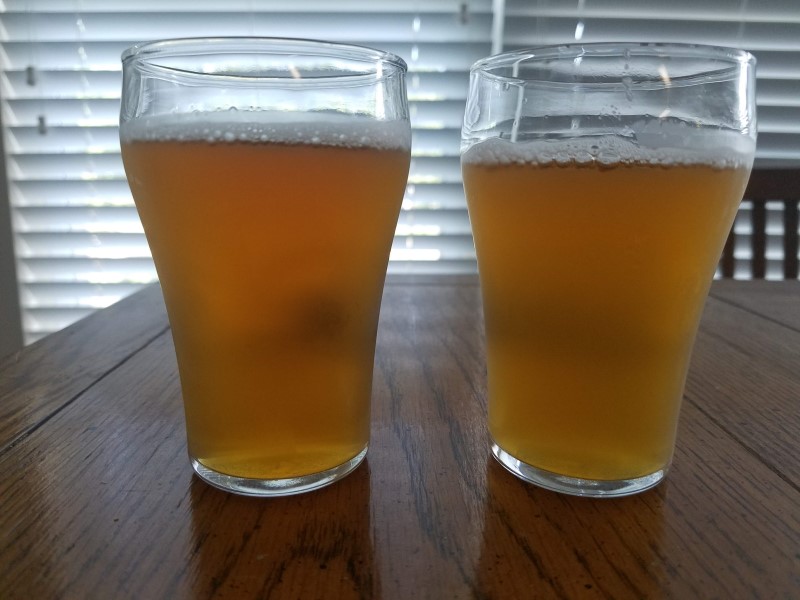Look at this cloudy mess!!! I am playing with a lighter malt bill for a Pale Ale (8 lbs Pale, 2 lbs Munich 15L, 0.5 lbs White Wheat). I also recently started using Whirlfloc tablets vs using Irish Moss, and wow does that clear up the wort! I am still not sure if clear wort (or Whirlfloc/Irish Moss) really results in more clear beer.

I might actually have a unexpected exbeeriment going. I have been splitting my 5 gal batches into two 3 gal fermenters (because my 6.5 gal carboy does not fit into my fermentation chamber, but two of these do). I started filling the one and picked up trub from the bottom, then the second was getting crystal clear wort, so I went ahead and filled that fully and more trub from the end of the transfer went into the first carboy. I am not sure if I will actually keg these separately (planned to combine them at kegging time).


I might actually have a unexpected exbeeriment going. I have been splitting my 5 gal batches into two 3 gal fermenters (because my 6.5 gal carboy does not fit into my fermentation chamber, but two of these do). I started filling the one and picked up trub from the bottom, then the second was getting crystal clear wort, so I went ahead and filled that fully and more trub from the end of the transfer went into the first carboy. I am not sure if I will actually keg these separately (planned to combine them at kegging time).







